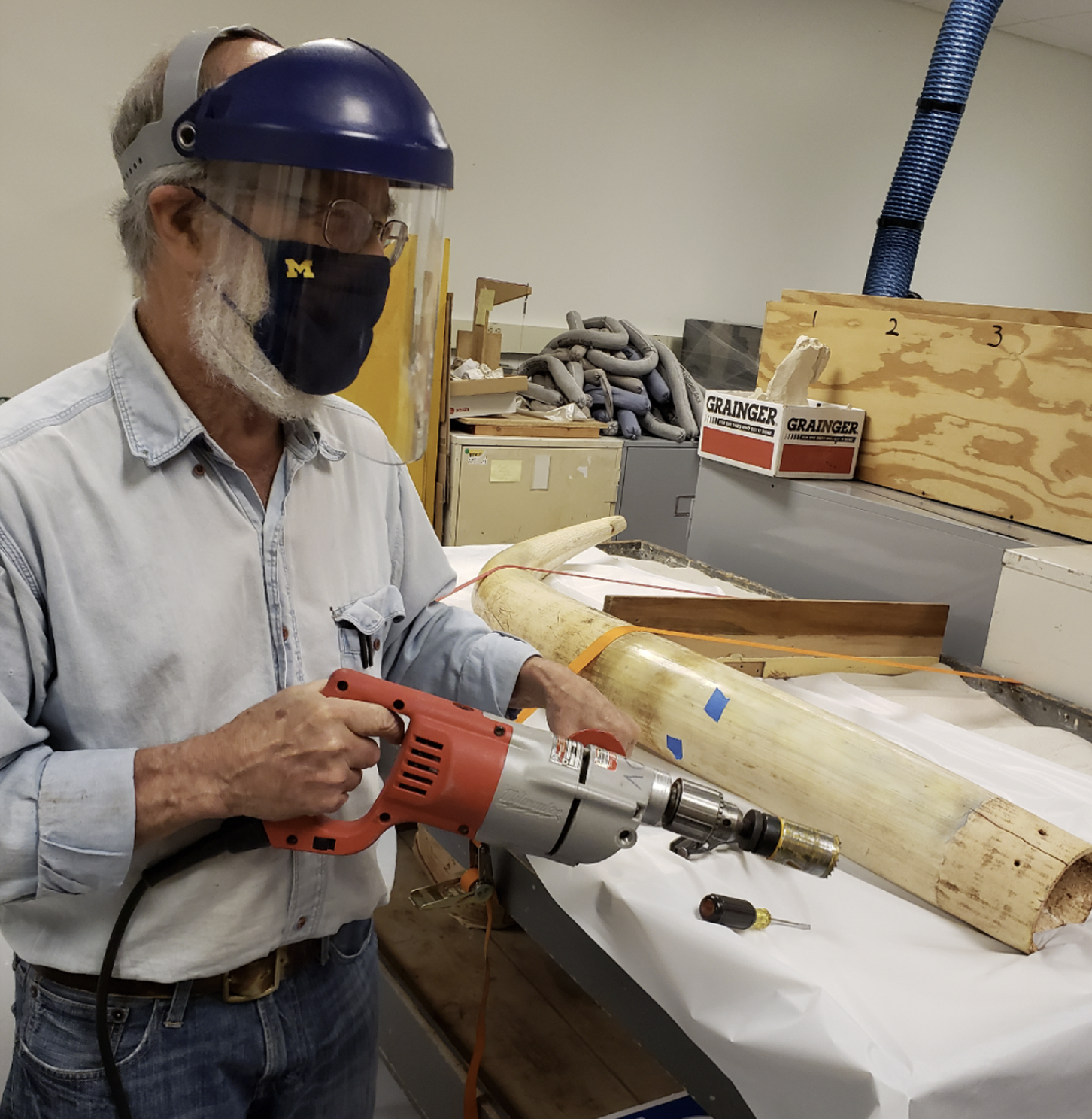Dr. Adam Rountrey is the Research Museum Collection Manager (Vertebrates/Plants) and 3D Specialist at the University of Michigan Museum of Paleontology (UMMP). From a variety of collaborative projects, he has deposited over 20 data sets of computerized tomography (CT) scans of UMMP specimens into Deep Blue Data, a repository offered by the University of Michigan Library that provides access and preservation services for digital research data that were developed or used in the support of research activities at U-M.
In this data interview, Adam describes the research done by himself and his collaborators for the journal article "Testosterone histories from tusks reveal woolly mammoth musth episodes" published in Nature earlier this month. It describes how they measured steroid hormone concentrations in a woolly mammoth tusk and an African elephant tusk. They found that tusks from both species showed periodic increases in testosterone during episodes of musth (a time of heightened aggression associated with mating).
This research projects utilized six data sets that are publicly available in Deep Blue Data: Loxodonta africana right tusk, Loxodonta africana tusk core, Mammuthus primigenius proximal tusk segment, Mammuthus primigenius tusk block 1 (proximalmost), Mammuthus primigenius tusk block 2, and Mammuthus primigenius tusk block 10 (distalmost).
Their article has garnered much media attention, including being featured on CNN, Smithsonian Magazine and Popular Science among others. Congrats to Adam and his collaborators on this publication!
What prompted you to conduct your research in this area?
Our lab group has been analyzing the tusks of mammoths and mastodons to uncover information about how these animals lived and how that might have changed in the time leading up to extinction. With this particular study, we are aiming to gain a better understanding of reproduction and social organization.

Article co-author Daniel Fisher, a paleontologist at the University of Michigan, cuts a core from an African elephant tusk.
For those not familiar with your field, what is the one thing you think is most important/interesting to know/unique about your work or your findings?
Not only does the work show that male mammoths experienced musth (a time of heightened aggression associated with mating), but it demonstrates that even ancient teeth can be used to reconstruct detailed, meaningful hormone records.
How do you hope your data might be encountered or reused out in the world?
The CT data we are sharing through Deep Blue Data include high resolution scans of mammoth tusks, as well as one of very few complete scans of a large African elephant tusk in the world. We're hoping others can use the scans to find new ways to extract more information from tusks.
What is one thing you learned during the process of preparing your data for deposit or sharing?
Some of the data were collected years ago on several different scanners, and in some cases, it took quite a bit of work to track down all of the metadata we needed. We now have a workflow to capture metadata in a standard format as part of the initial processing of the data.
Why do you think sharing data is important?
Sharing data is essential to permit critical review and validation of results, but the availability of research data from reliable sources also helps to drive the development of novel methods and to build bridges between traditional disciplines.